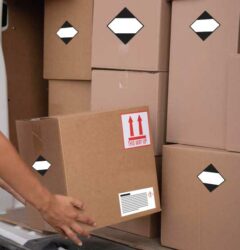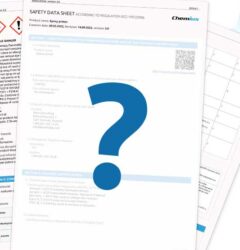25 Nov

The safety data sheet is a chemical’s identity card.
This means that the safety data sheet includes all information related to the chemical: basic information about the chemical (name, code, supplier), chemical composition, hazards as well as detailed toxicological and ecotoxicological data.
The safety data sheet is intended for professional users of chemicals, who are obliged to apprise themselves of the dangers of the chemicals and safety measures for safe handling of such chemicals.
It is the obligation of every supplier of dangerous chemicals to provide the customer with the safety data sheet for the specific dangerous chemical, free of charge.
The only exception are consumers (natural persons).
A consumer who purchases a dangerous chemical for personal use is not entitled to the safety data sheet. In this case, the data on the label are sufficient for the consumer to become acquainted with the dangers and measures for safe use.
What that means is that the safety data sheet and its content are not confidential.
So how should one handle the safety data sheets?
Some companies decide on the “closed system” sending the safety data sheets only to customers. Jet others publish their safety data sheets online (“open system”).
The advantage of publishing safety data sheets online is that the customers, partners or distributors can download or read the safety data sheets of your products on their own – anywhere and anytime.
This is especially useful for distributors and customers who do not always have access to their computer, but do have a mobile phone and access to internet.
Some companies decide on the “closed system” sending the safety data sheets only to customers. Jet others publish their safety data sheets online (“open system”).
An additional advantage is that the customers can study your products in detail before an actual purchase.
The disadvantage is, of course, that the safety data sheets are available to everyone (e.g. also your competition). Thus you cannot control who has access to them.
The function of the closed system is the opposite: you have control, however the customers cannot help themselves. In this case, you will be busy delivering the safety data sheets.
The largest companies in the chemical industry generally use the closed system. However, their processes and information systems are regulated in such way that for every order, the safety data sheets are automatically sent to customers by e-mail.
Nevertheless, you must never, under any circumstances, deny the handover of the safety data sheet to a professional customer. In other words: if someone wishes to get the safety data sheet for a specific product, they must purchase at least the smallest quantity of this product or order a sample.
The decision for either possibility depends completely on your interests. You must only ensure that you actually give/deliver the customer the safety data sheet for the purchased chemical.
However, be cautious. Article 31(8) of the REACH 1907/2006 Decree states: “The safety data sheet must be ensured free of charge on paper or electronically at the latest on the day when the substance or compound is supplied.”
The meaning of the expression “must be ensured” is explained in detail in the Guidance on the compilation of safety data sheets, which states: “It must be taken into consideration that in this sense, the phrase “must be ensured” should be understood as the positive obligation of the supplier to actually deliver the safety data sheet (and every required update) and not to only make it available in a passive manner, for example on the internet, or to deliver it only at request.”
Publishing safety data sheets on a website thus does not count as fulfilment of obligations according to “ensuring” thereof. It is also not acceptable to send an e-mail with a link to a general website, where the safety data sheet (or the most recent updated version) can be found and downloaded.
To ensure the safety data sheet—regardless of whether you choose the open or closed system—thus means to physically hand over the specific data sheet to the customer or to send it by e-mail in a format the customer can open.
And we can help you with this.



Simona Miklavčič